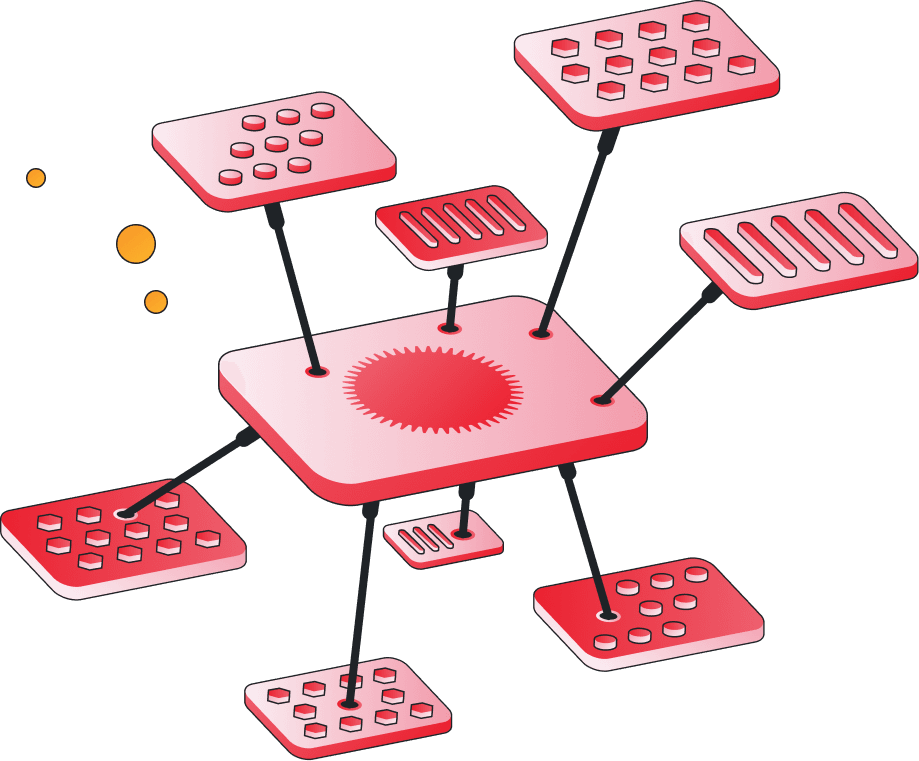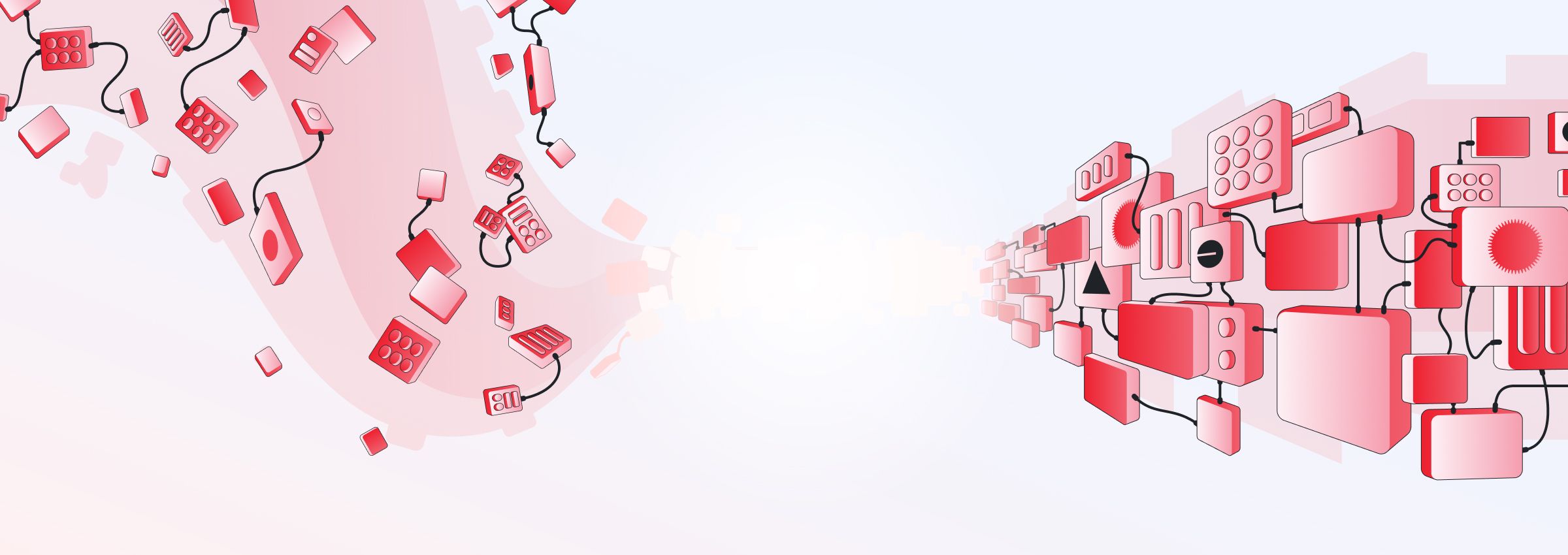Fear not! Although the name "OP Mainnet" might not elicit the same warm feelings, the switch wasn't just a spur-of-the-moment decision. In fact, the rebrand signifies a pivotal moment for the network: its transition towards becoming a superchain. The first time I stumbled upon their vision, I was beyond thrilled—scratch that, I was electrified. And yes, that enthusiasm hasn't waned; I'm still on the edge of my seat, eagerly awaiting the day this evolution unfolds in the tech world and goes mainstream.
In this guide, we'll delve into:
- Current Struggles: Understanding the challenges faced by Ethereum and Layer 2s, including Optimism.
- The Superchain: Learning what it is and its significance.
- The OP Stack: Getting a grip on its components and purpose.
- Superchain Members: Identifying which chains are currently part of this network.
Ready to sprinkle a dash of optimism into your day? Let's dive right in!
Landed here by mistake and have no clue what Optimism is about?
Check out our guide on What is the Optimism Blockchain? before you leave!
The end game: Scaling Ethereum
Let's face it, unless you stumbled upon this article by sheer accident (maybe you were searching for tips to boost your optimism—life can be funny that way), you're no stranger to Ethereum and its challenges over the years.
It became evident: the busier Ethereum got, the more its speed suffered and costs soared. Recall 2021? It seemed like every other day, the network's fees would skyrocket, thanks to a trendy coin launch or a hyped-up NFT mint. Everyday users found themselves priced out. Imagine shelling out $100 just for a token swap, or $20 to shift your ETH to another wallet. Madness!
Frankly, the situation was rough. This is precisely why Layer 2 solutions, such as Optimism—introduced in early January 2021—gained traction. Users could execute similar actions as on Ethereum, but at a fraction of the cost and with improved speed.
ℹ️ Over the past two years, Optimism estimates that OP Mainnet has saved users a whopping $4.41 billion in fees and a collective 30 years waiting for transaction confirmations. THAT'S INSANELY IMPRESSIVE!!! And remember, that's just from one Layer 2 solution. There are others out there, like Arbitrum, which is another popular choice.
Sounds perfect, doesn't it? With these efficient Layer 2s, one might think we can kick back, relax, and proudly proclaim that Ethereum has scaled.
But hold on... it's not that simple. True Ethereum scaling? It's still a work in progress.
For Ethereum to compete with the titans of web2 and claim the next frontier of the software realm, it requires internet-level scalability. Presently, no single chain can deliver that, not even those with catchy names like Optimism.
You might think: just pile on more Layer 2s and chains, and we'll have Ethereum fully scaled, right?
Once more, it's not that straightforward. Venturing into a multichain realm introduces its own set of hurdles. We're talking fragmented liquidity and dilution of network effects, just to name a couple.
There has to be a way out, right? How do we gear up for the imminent surge of adoption and achieve that internet-level scale (envision 1 BILLION USERS IN CRYPTO)?
Enter the superchain! This innovation promises the best of both worlds: the expansive scalability of parallel chains coupled with the seamless integration of a singular blockchain.
For a change, instead of constructing in isolation, we can collaborate—perhaps on the OP stack. This would ensure these chains benefit from a shared open-source foundation, one that champions decentralization, governance, and security.
Optimism has always been an open source project, and proudly has the most forks of any L2. But now, it’s time to double down. This isn’t just about creating many chains–it’s about uniting them into a single network.
Optimism goes Superchain
"Scaling together, not apart" – has a catchy feel to it, doesn't it?
At its core, the Superchain aims to weave disparate L2s into a cohesive, interoperable framework. Imagine a future where launching an L2 is as straightforward as deploying a smart contract on Ethereum right now.

ℹ️ But what is a superchain?
A Superchain is a network of chains that scales horizontally, unified by shared security, a communication layer, and an open-source development stack. In simpler terms, it's a web of individual blockchains, or "Layer 2" solutions, intricately linked with features such as fluid bridges for smooth interoperability.
Over time, the Superchain has the potential to flourish into a vast network that heightens interoperability, uniformly adopts decentralized protocols, and standardizes its fundamental elements—all while supporting the public resources that make it possible.

Didn't catch all that tech jargon? Let's break it down for the non-geeks: The Superchain is like a communal tool. Rather than companies launching their own distinct Layer 2 solutions, they can all tap into the same tech foundation. The more it's used, the better it becomes for everyone involved.
What’s the OP Stack?
As the Superchain vision takes shape, there's a pressing need for Optimism to streamline the launch of new chains, ensuring they mesh seamlessly within the overarching Superchain ecosystem.
But here's the challenge: How can we empower any entity to introduce its own Layer 2 as an integrated part of the Superchain? And, equally vital, how can we sidestep the pitfall of repetitively crafting the same software in isolated pockets?
The answer might sound simple (though in practice, it's anything but): develop a standardized set of open-source software tools tailored to each of Layer 2's primary modules—namely, the consensus, execution, and settlement layers. This comprehensive toolkit? We'll dub it the OP Stack.

The OP Stack is essentially the technological heartbeat of Optimism. Right now, it's the force driving the Optimism Mainnet, but its future lies in shaping the Optimism Superchain and its governance mechanisms. Just as Optimism is destined to grow and change, the OP Stack will adapt and evolve alongside it.
Who's Building on the OP Stack?
Prominent projects within the Superchain ecosystem, like Coinbase's Base and Zora Network, are harnessing the power of the OP Stack. Their aim? Boosting transaction speeds and trimming gas costs for their communities.
Base
Coinbase has launched Base using the OP Stack. Its goal? To bring Coinbase users into the DeFi space. With Base, close to one hundred million users have a clear path to explore DeFi. This move is a big part of Coinbase's plan to bring in the next billion users and move towards a fully on-chain world.
ℹ️ Why is this great?
Base gives back by putting some of its transaction fee money into the Optimism Collective treasury. This supports a future where doing good equals making profit. Plus, Coinbase is now a main developer for the OP Stack code.
Zora
Another project using the OP Stack is Zora Network. It's a quick, affordable, and easily scalable Layer 2 with a focus on bringing media onchain. While many L2s lean heavily towards DeFi, Zora Network stands out by prioritizing NFTs. Transactions are confirmed in just seconds, and the cost to mint an NFT is under $0.50. This approach paves the way for exciting new onchain opportunities.
Wrapping Up
We're truly in an exciting time, aren't we? I'm genuinely optimistic (pun intended) about Optimism and the potential of its OP Stack. It's poised to be the go-to foundation for many Layer 2 solutions in the future.

Want to dive deeper? Here are some resources:
Got thoughts or questions? Feel free to hit me up on Twitter.

Article by
Maxime ServaisI'm a Software Developer and Tech Writer over at Ethereum Ecosystem. Basically, I make sure everything we cook up is top-notch and awesome!
